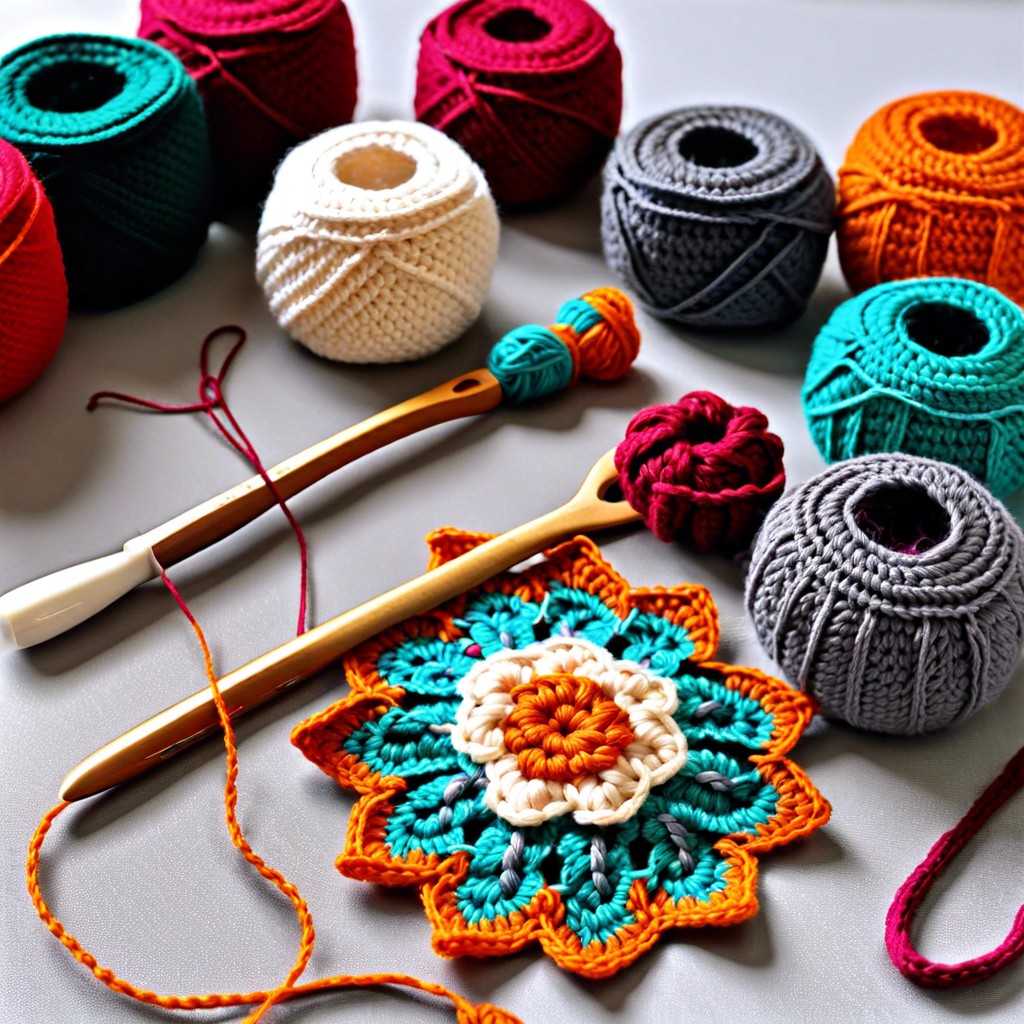Learn effective strategies for selling your crochet items and turning your passion into profit.
Key takeaways:
- Assess your crochet skills and focus on your strengths.
- Research the market and audience preferences to tailor your products.
- Design a cohesive product line that reflects a specific theme or style.
- Consider online marketplaces, craft fairs, social media, or boutiques to sell your products.
- Price your products by considering material costs, time spent, market research, overhead costs, and profit margin.
Assess Your Skills

Start by taking an honest inventory of your abilities, but don’t worry, there’s no pop quiz at the end. Consider the types of crochet you’re best at – are you a wizard with amigurumi or a granny square guru? Knowing your strengths will help you choose products you can make efficiently and sell confidently.
Next, rate your speed. If you crochet like a caffeinated squirrel, you might handle bulk orders with ease. If you take your time, focus on intricate, high-quality pieces that you can sell at a premium.
Lastly, gather feedback from trusted friends or fellow crafters. They’ll kindly tell you if your scarf looks more like a serpentine belt. Honest opinions can guide you in refining your skills before you hit the market.
Conduct Market and Audience Research
Dive into the world of crochet enthusiasts! Peek at what’s hot and what’s not through social media, online forums, and crafty blogs. Notice which items fly off the virtual shelves and which gather digital dust.
Consider the preferences and quirks of potential customers. Are they after cozy winter gear or quirky décor items? Do they prefer bright, bold colors or soft pastels? Knowing your crowd helps you tailor your creations to their tastes.
Competitor snooping (ethically, of course)—check out other crafters offering similar products. See their pricing, what materials they use, and how they market themselves. This intel is crochet gold for positioning your own offerings.
Look at seasonal trends. Pumpkin-themed cozies might hit the spot in October, while beachy vibes are fab for summer months. Longevity matters but riding the trend wave boosts sales too.
Engage with your targeted audience directly. Polls and surveys on Instagram or Facebook can yield insights. People love giving opinions (sometimes too much), use it to your advantage.
Design Your Product Line
Begin by brainstorming ideas for unique, engaging crochet items. Consider current trends, such as chunky blankets, boho wall hangings, or eco-friendly market bags. Keep your target audience in mind; trendy teens and cozy-loving grandmas have different tastes.
Create a cohesive collection that reflects a specific theme or style. Think matching sets of home decor, or a series of baby items. Consistency helps in building a recognizable brand.
Experiment with color palettes. Pick a few signature colors that pop together and make your products visually appealing. This can make your brand memorable at a glance.
Incorporate different materials. Using a mix of yarn types, like cotton for kitchen items and wool for wearables, can cater to diverse needs and preferences.
Sketch your designs. No need to be Picasso, just enough to plan and visualize before you start crocheting. Also, it’s a handy way to keep track of your ideas.
Remember, keep things fresh and exciting. Regularly introduce new items to keep your shop buzzing.
Decide Where to Sell Your Products
Online marketplaces are a fantastic option, offering a wide audience and easy setup. Websites like Etsy, eBay, and even Amazon Handmade can get your products in front of millions without you having to leave the comfort of your craft space.
For those who appreciate a personal touch, craft fairs and farmer’s markets are perfect. You get immediate customer feedback and the chance to build local clientele. Plus, who wouldn’t want to spend the day among fellow yarn enthusiasts?
Social media platforms can double as sales venues. Instagram, Facebook, and Pinterest allow you to showcase your work and connect directly with potential buyers. Don’t underestimate the power of a well-lit photo and a hashtag or two.
Local boutiques or consignment shops are another avenue. Approach store owners with some of your best pieces. They handle the sales, you get the profit, and hopefully—repeat customers.
Lastly, consider creating your own website. This can be more work initially but offers complete control over branding and sales. Not to mention, it can be a hub for loyal customers to return to again and again.
Price Your Products
Consider the cost of materials first. That gorgeous, sparkly yarn isn’t free, after all. Factor in every penny spent on yarn, hooks, and those cute little stitch markers you absolutely had to have.
Don’t forget your time. Your hours of meticulous crafting deserve compensation. Calculate how long each item takes to make, then set an hourly rate. Remember, you’re not a sweatshop—charging fairly is crucial.
Research the market. What are other crafters charging for similar items? Don’t price yourself out of the market, but don’t undervalue your skills either. There’s a sweet spot somewhere between bargain bin and designer boutique.
Factor in overhead costs. If you’re selling online, there might be listing fees, shipping costs, and packaging materials to consider. Selling at a craft fair? Table fees exist, and so does gas money.
Think about your profit margin. A little wiggle room ensures that even if sales slow down, you’re not working at a loss. Aim for a balance between irresistible prices for customers and sustainable profits for you.
Finally, keep it simple. Use round numbers to make pricing straightforward. $20 sounds better than $19.37. Plus, it’s easier to calculate on the fly at a busy craft fair.
Magic happens when you find the right price point. Do a little math, trust your instincts, and get ready to watch your crochet creations fly off the shelves.





